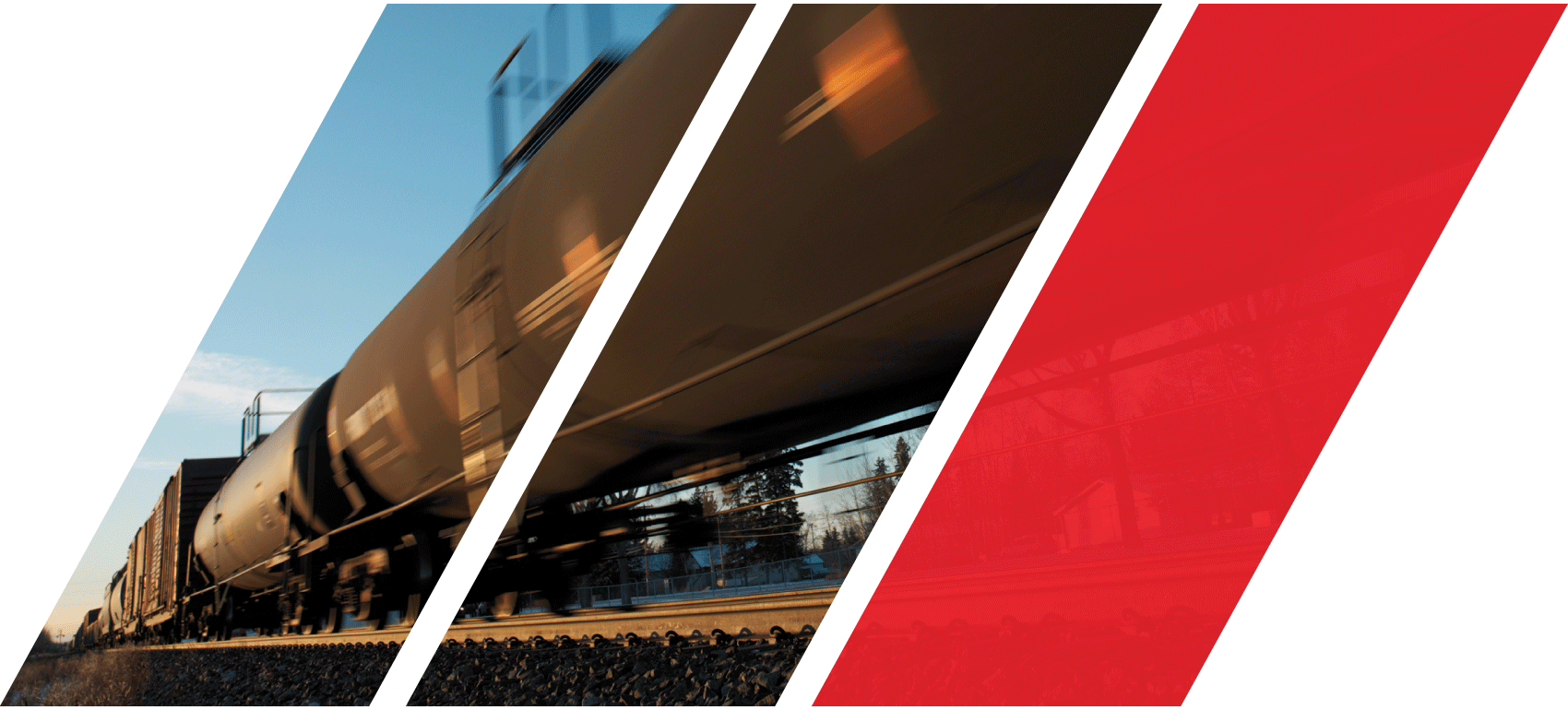Railways are required by law to move dangerous goods, which represent roughly 11 per cent of all rail traffic in Canada. The movement of these products is strictly regulated; the Transportation of Dangerous Goods Act requires railcars carrying dangerous goods to meet strict standards, shipments to be properly packaged, labelled and documented, and employees to be trained to safely handle railcars. Trains carrying dangerous goods are also inspected—not only at their departure point, but also all along their route.
While the vast majority of dangerous goods tank cars currently in service in North America are actually owned by rail customers and leasing companies, the new TC-117 tank car standard will still go a long way towards improving rail safety. The standard requires tank cars carrying flammable liquids to have thicker steel shells than previous models, as well as thermal insulation and full head shields, among other improvements.
Railways must have emergency response plans in place, to ensure an immediate and comprehensive response in the event of a transportation incident. By law, they must provide municipalities with regular reports about the products moving through their communities, including the number of unit trains, the percentage of railcars carrying dangerous goods, and the nature and volume of those goods. In addition, Canada’s railways have developed a mobile application—AskRail™—to give emergency responders real-time information about railcar contents.
Since 1999, the Railway Association of Canada’s Dangerous Goods (DG) Team has also helped the association’s members to meet the challenges of handling and transporting dangerous goods. The DG Team provides advice and training to railway personnel, and works with customers, community members and emergency responders to make sure they are prepared to deal with any incidents that do occur. The team helps communities to develop emergency response plans, and trains first responders through the Transportation Community Awareness and Emergency Response (TRANSCAER®) initiative. DG Team members are also on-call 24-hours a day, seven days a week at strategic points across Canada (Toronto, Montreal, and Edmonton) to provide emergency response expertise and support in the event of a railway incident.
Every day, dangerous goods are transported along Canada’s nearly 43,000 kilometres of railway tracks—from the jet fuels used to power airplanes, to the sulfuric acid used to make agricultural fertilizers. These products are essential for our health, our safety and our economy, and the Railway Association of Canada’s Dangerous Goods Team (RAC’s DG Team) is one of the reasons that over 99.99 per cent of rail shipments of these goods arrive at their destination without a release caused by an accident.
Since it was first started back in 1999, RAC’s DG Team has helped to ensure that Canada’s railways can meet the challenges of handling and transporting dangerous goods. The DG Team provides training, as well as support and guidance to railway employees and shippers on the proper labelling, safe loading and unloading of railcars and other containers. The team also inspects and audits facilities (chemical, energy and railway) to make sure that railcars and containers carrying dangerous goods comply with regulations.
By sharing information on the goods moving through communities and training emergency responders on how to deal with potential incidents through specialized courses and the Transportation Community Awareness and Emergency Response (TRANSCAER®) initiative, the DG Team assists municipalities with their emergency response planning.
Made up of specialists with emergency response, technical and regulatory experience, as well as extensive knowledge of tank car design, construction and damage assessment, the DG Team helps RAC members and communities to prepare for any transportation incidents that may occur.
DG Team members are stationed at strategic points across Canada—in Toronto, Montreal, and Edmonton—and are on-call 24 hours a day, seven days a week, to assist in the case of an emergency.
Available training courses coming soon
Please Contact The Team Member In Your Area:
Scott Croome
Director, Dangerous Goods – (Toronto)
(647) 206-2896
Nicholas Hodge
Transportation of Dangerous Goods Specialist – (Montreal)
(514) 891-8935
Curtis Myson
Transportation of Dangerous Goods Specialist – (Edmonton)
(780)-619-2763
